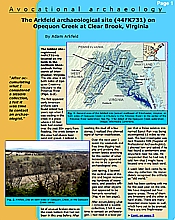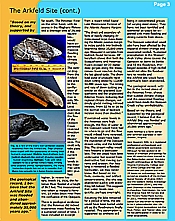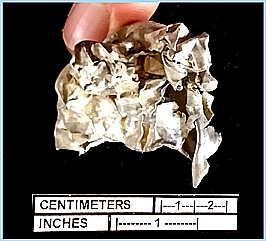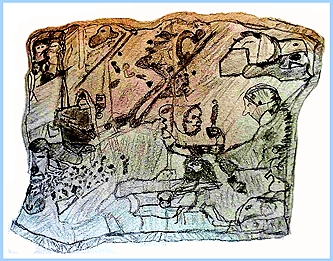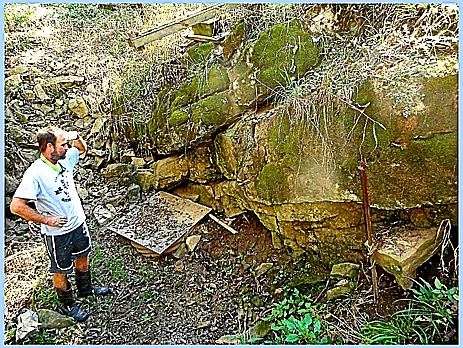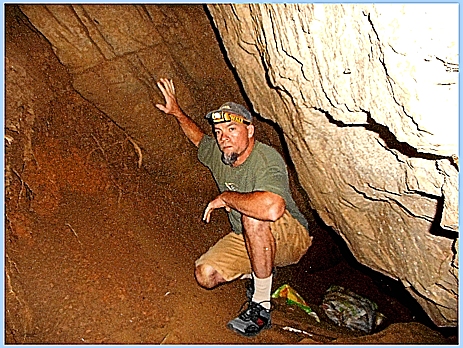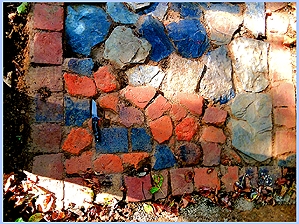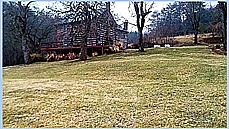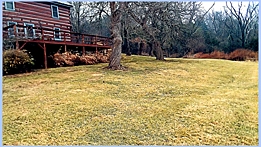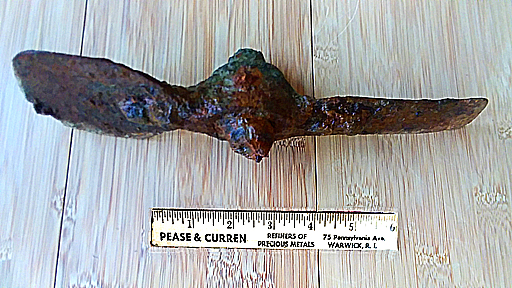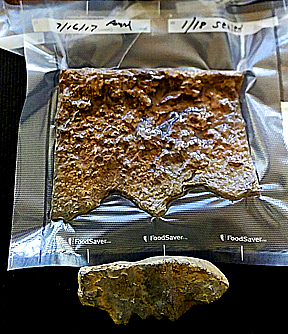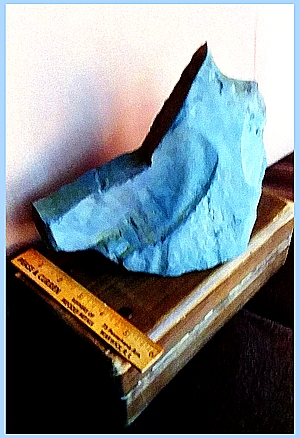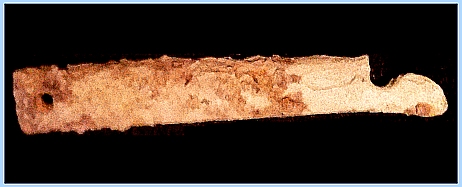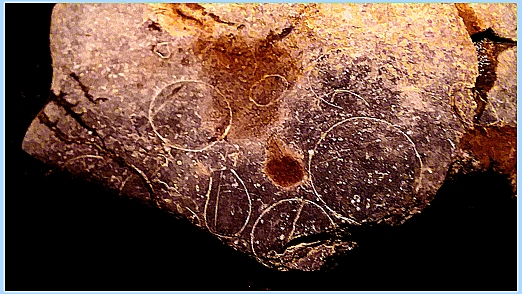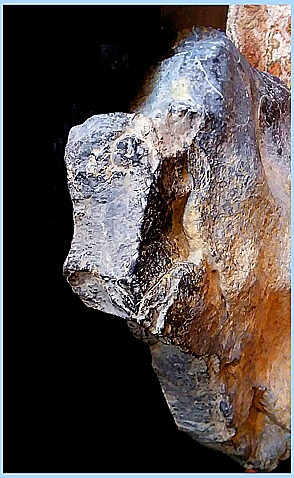File:
<Opequon.htm> Citations Dedications <American
Archeology>
General Index Subject Index <Home>
|
PRE-COLUMBIAN
VIRGINIA ARCHEOLOGICAL SITE Erich.
F. Legner & Robert D. Morritt [Contact ] Please CLICK on Underlined Categories for details and Photos to enlarge.
Depress Ctrl/F for subject search. Investigations of an
archaeological site along the Opequon
Creek in the Northern
Shenandoah Valley of Virginia since 2012 presents evidence of
various ancient Scythian and European colonists dating from before the
Christian Era to the First Century AD.
The principal investigator, metallurgist Adam Arkfeld, has uncovered
significant amounts of iron slag and refractories at the site (see Radiocarbon Report #1
& #2). Also recovered are cast iron artifacts
(e.g., Figs. 7,
8 & 18). The metallurgy here was quite advanced,
and slags found suggest aluminum production (Fig. 1). Although this seems far too advanced for
the time period, there has also been the discovery of a piece of apparent
sculpted aircraft aluminum (Fig. 2). It was recovered at a depth in
association with stone artifacts. An
advanced blast furnace was operating in the area circa 150 AD. (Fig. 19) Remnants of the milldam and deep race
channels are readily observable. C14
results bracket the TL date of the First Century AD. Not only was evidence uncovered of
advanced metallurgy but also fired brick was manufactured in great quantities
during the same period (Fig. 21). TL results from the brick are in process
of determination. Evidence indicates
that a step mound was faced with glazed brick pavers. There are virtually tons of 2000-year-old
brick in situ. (Figs. 20 & 21). The University of Washington dated the
furnace wall sample to 150 AD. There
is proof that smelting was occurring here on an industrial scale using an
anthracite fired blast furnace, pointing to the presence of Europeans. Sections of the milldam are still
existent. Significant earth works created to channel the millrace are still
apparent. Anthracite has been found in
association with the furnace. C14 testing of the slag confirms fossil fuel
use. Two different samples tested by
Beta Labs (pdf #1 & #2), both produced infinite
dates. Anthracite is the only coal
suitable for smelting. Geological
maps show that east coast anthracite beds, which are accessible by water, are
limited. The most accessible mine
from the Chesapeake Bay is the Meadow Branch Mine in West Virginia, and it is located 20 miles
west of the furnace site. The
archeological site is very close to the mine where a mill could be
constructed, and there is a navigable water route to the Potomac River. The fuel was crucial to their metallurgy, which would explain
why this location was chosen. A
two-pound pig iron bar is shown on the cover in Fig.
19. Fig. 23
& Fig.
24 show
the original farmhouse built circa 1790.
When the settlers arrived they found this hillside already terraced.
Like many other examples across the globe, existing building sites are
reused. The materials removed by the
settlers when digging out the cellar and foundations were dumped as fill in a
nearby gully. Likely, the brick and stone artifacts removed were considered
"Native American junk". Fig. 22 shows a section of the
same step mound that has eroded and revealed the pavers. Of course some are quick to label the
brick as "colonial". But
there is a lack of mortar, and it is undoubtedly not a colonial dry stacked
brick structure. Additionally, there
are no historic brick structures on this farm or any of the surrounding
properties. Fig. 21 shows a brick
mosaic. The colonial debris layer was
well above the brick. The uncovered brick quickly began to disintegrate with
exposure, and unglazed bricks have fallen to pieces. The magazine cover (Fig. 20) has
the site erroneously located in West Virginia as it is in Virginia, a mile
south of the West Virginia border.
A mattock (Fig. 17) was
recovered within 10 feet of a cast iron profile (Fig. 18). Both of these artifacts were submerged and
preserved in mud and sand. The water has a high mineral concentration. Both have been sealed in plastic because
exposure began to deteriorate them rapidly.
The wood remaining in the socket of the mattock is petrified. There is little doubt of the antiquity of
an iron mask as the profile matches many others in the collection that are
made of stone. The mattock is made of
the same metal and shows identical patination/oxidation. It can be surmised that both items are
from the same time period. Assuming
that organic material is still present, the wood remaining in the socket
makes that mattock an ideal iron artifact to test and date. Most recognize the limestone
sculpture in Figure 7 as an
Anubis bust. Nevertheless, on learning
that it is from Virginia, some observers begin to doubt the
association. The iron-embalming
knives (Fig.
9) cause a similar reaction.
Also found were clay and stone Horus hawks, Osiris, Thoth... almost
the whole pantheon. Many Baal
figurines and his pornographic signature
as well. There is no lack of
Scythian characters with tall pointed hats abounding. The stone mounds here are interlaced with
logs, consistent with Kurgan design.
The Sumerians
were probably the only culture with knowledge to make an accurate planetary
chart (Fig. 13). This example was recovered adjacent to a stream
in an aqueous environment. The etched
circles on the back of a bison) bull (Fig. 12) have
been permeated with white calcite.
The identity of the different ancient
inhabitants at the Opequon site is as yet uncertain. However, an advanced metallurgy coupled
with inscriptions of figures in tall pointed hats may include Scythians. A large work force, probably involving
slaves, was required in the production of iron and other metals. Drawings of them on stone and ceramics have
been found, with some bearing equatorial African features. The burials are consistent with Osirian internments,
and the grave goods correspond with those of the Levant. Adam Arkfeld continues to be ignored by archeologists,
and he does not know if his discoveries will ever be officially recognized. = = = = = = = = = = = = = = = =
= = = = = = = = = Wilson, Charles A. and A. A.
Field. 2017. The Arkfeld site Iron Smelting Virginia 150 AD.:
Discoveries Along the Opequon Creek. Ancient American.
2017. Archeology of The
Americas Before Columbus. Vol. 21
(114). Anthony,
David W. (July 26, 2010). The Horse,
the Wheel, and Language: How Bronze-Age Riders from the Eurasian Steppes
Shaped the Modern World. Princeton University Press. ISBN 1-4008-3110-5.
Retrieved January 18, 2015. Baumer,
Christoph (December 12, 2012). The
History of Central Asia: The Age of the Steppe Warriors. I.B.Tauris. ISBN 1-78076-060-4.
Retrieved January 18, 2015. Beckwith, Christopher I. (March 16, 2009). Empires of
the Silk Road: A History of Central Eurasia from the Bronze Age to the
Present. Princeton University Press. ISBN 1-4008-2994-1.
Retrieved December 30, 2014. Bertman, S.
(2014). Handbook to Life in
Ancient Mesopotamia. Oxford Univ.
Press. Boardman, John; Edwards,
I. E. S. (1991). The
Cambridge Ancient History. Volume 3. Part 2. Cambridge University Press. ISBN 0-521-22717-8.
Retrieved March 2, 2015. Bonfante,
Larissa (2011). "The Scythians: Between Mobility, Tomb Architecture, and
Early Urban Structures". The Barbarians of Ancient Europe: Realities and Interactions. Cambridge University Press. ISBN 978-0-521-19404-4. Davis-Kimball,
Jeannine (1995). "The Scythians in southeastern Europe". Nomads of the Eurasian Steppes in the early Iron Age (PDF). Zinat press. ISBN 1-885979-00-2. Day,
John V. (2001). Indo-European
origins: the anthropological evidence. Institute for the Study of Man. ISBN 0-941694-75-5.
Retrieved March 2, 2015. Drews,
Robert (2004). Early Riders: The Beginnings of Mounted Warfare in Asia and
Europe. Routledge. ISBN 978-0-203-07107-6. Durant, W.
1954. (1954). Our Oriental Heritage. Simon & Schuster Publ. 1052 pp. Ivantchik,
Askold (2018). "SCYTHIANS". Encyclopaedia
Iranica. Kramer, S. N. (1971). The Sumerians. Univ. of
Chicago Press. 372 pp. Kramer, S. N.
(1988). History Begins at Sumer. Univ. of Pennsylvania Press. 416 pp. Kriwaczek, P. (2014). Babylon. Thomas Dunne
Books. Leick, G.
(2010). The A to Z of
Mesopotamia. Scarecrow Press. Podany, A. H.
(2013). The Ancient Near
East. Oxford Univ. Press. 168 pp. Sinor,
Denis (1990). The Cambridge History of Early Inner Asia. Cambridge. ISBN 978-0-521-24304-9. Sulimirski,
T (1985). "Chapter 4: The Scyths". In Gershevitch, Ilya. The
Cambridge History of Iran. 2.
Azargoshnasp.net. pp. 149–99 Szemerényi, Oswald (1980). Four old Iranian ethnic names: Scythian – Skudra – Sogdian –
Saka (PDF). Veröffentlichungen der iranischen Kommission Band 9.
Wien: Verlag der Österreichischen Akademie der Wissenschaften;
azargoshnap.net. Waldman,
Carl; Mason, Catherine (2006). Encyclopedia
of European Peoples. Infobase Publishing. ISBN 1-4381-2918-1.
Retrieved January 16, 2015. West, Barbara A. (January
1, 2009). Encyclopedia
of the Peoples of Asia and Oceania. Infobase Publishing. ISBN 1-4381-1913-5.
Retrieved January 18, 2015. |
